The Anson Engine Museum in Cheshire re-opens
Posted by Chris Graham on 8th July 2024
Barry Job reports on the re-opening of the Anson Engine Museum at Poynton in Cheshire and the fascinating exhibits on display in it.
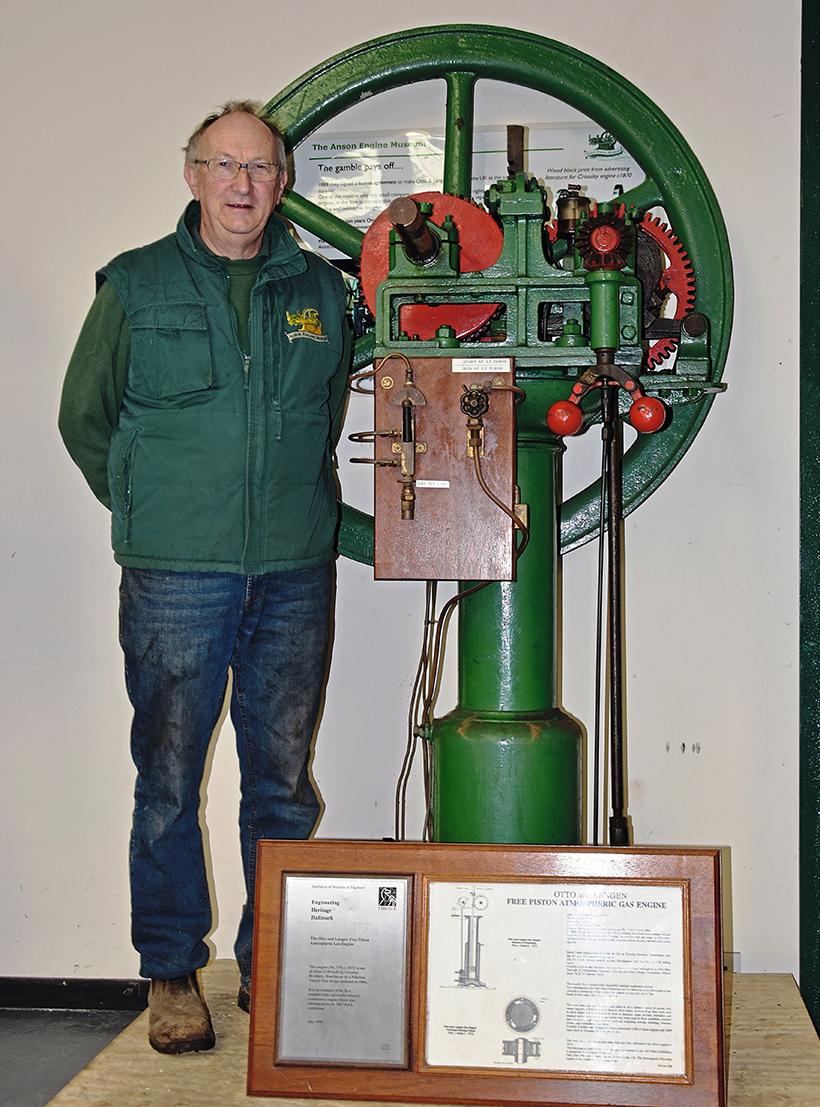
Geoff Challinor, Museum Curator, stands beside the Museum’s latest acquisition; Crossley ‘Atmospheric Engine’, s/n 379, of 1872.
Visitors to the Anson Engine Museum at Poynton in Cheshire now have the unique opportunity to see four Crossley ‘Atmospheric Engines’ together. There is also a fifth ‘Atmospheric Engine’ in the Museum’s Reception Area.
This engine is in such a prominent position as it is a significant engine being Crossley serial number one, the first engine they produced in 1869. The fourth engine on display referred to earlier is Crossley gas engine, serial number 379, of 1872. Geoff Challinor, Museum Curator, announced that it has recently been acquired from the Heat Laboratory of Nottingham University. Indeed it is currently still standing on its delivery pallet. Readers who have been mechanical engineering students will almost certainly have carried out laboratory tests on an internal combustion engine running to determine the power developed, the fuel consumption, the air-fuel ratio and hence the efficiency of the engine.
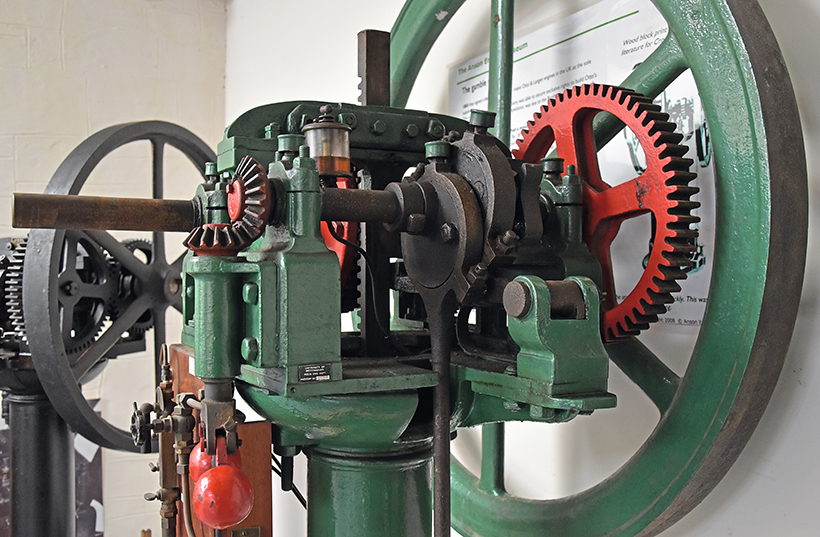
A close up picture of Crossley 379 shows the toothed rack gear, conventional flyball governors control the engine’s speed which was typically 90rpm.
The engine purchased for test depended on the whim of the governors of the educational establishment but may have been a diesel Tangye or more commonly a diesel Ruston and Hornsby product. Indeed, in 1992 I saved a test engine from the North Staffordshire Technical College which was a 1950 Ruston 2XHR. So, Crossley s/n 379, was certainly run by students, but whether such an early gas engine was actually used for tests or simply for demonstration purposes is a matter of conjecture.

Crossley’s ‘Atmospheric Engine’ , serial number one, of 1869 is on loan from the Science Museum, London. In spite of its size, it is only half a horsepower.
These early engines were of the ‘Free Piston’ design, the first commercially successful internal combustion engine patented in 1866 by Nicolaus Otto with finance provided by Eugen Langen. The Otto-Langen engines were first shown to the public at the 1867 Paris exhibition where everyone was amazed at their efficiency. They were a breakthrough in internal combustion design although their power output was typically only half a horsepower. Crossley Brothers of Manchester held the sole manufacturing rights in the United Kingdom, hence all of the Museum’s ‘Atmospheric Engines’ are Crossleys. During the Anson Museum’s first Open Day their principle of operation was described in an informative and entertaining talk by Paul Curzon. Put simply; a slide valve allows a flame from a pilot light into the vertical gas filled cylinder.

Gas engines need to obtain their gas supply from a reservoir:- a ‘gas bag’. Engine s/n 379, utilises a hot water bottle for this!
The piston is face down with a rack gear attached to the upper surface. Upon ignition, the piston and rack gear fly upwards, the rack gear engages with a gear wheel which contains a one-way friction clutch such that the gear rotates without turning the flywheel. However, when atmospheric pressure forces the piston and rack gear downwards, the clutch engages and the flywheel is rotated. Paul concluded his talk by operating the Crossley ‘Atmospheric Engine’ number 1403 of 1877. Rated at 3 nominal horsepower this was the largest engine they produced. It worked unloading barges at Bristol Docks and still drives its original hoist. The visitors then appreciated why these engines were called ‘Rattling Monsters’!
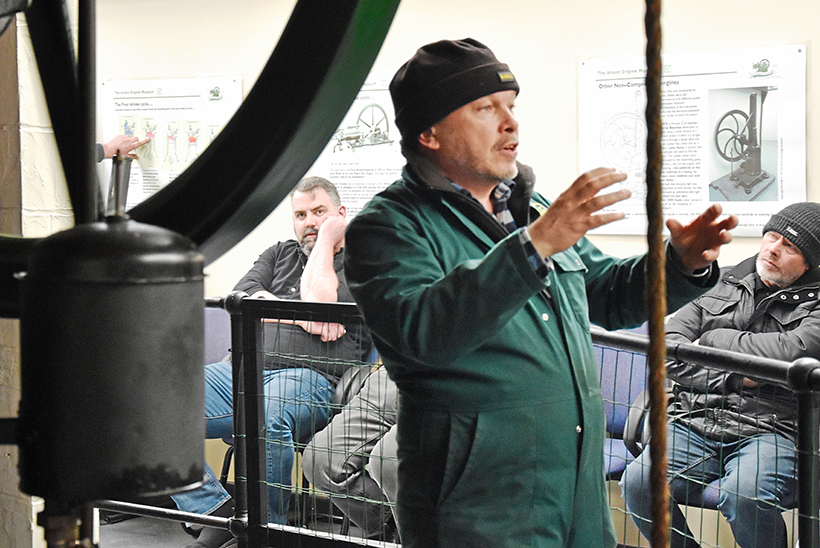
Paul Curzon gave a talk on ‘Atmospheric Engines’, illustrated by running Crossley s/n 1403.
The Blackstone section of the Museum was under the auspices of Tony Green, Museum Trustee, and Val Moore, a contributor to this magazine who regularly travels from Northern Ireland to volunteer at the Museum. The majority of the Blackstone engines were running at some time of the day, but it was particularly pleasing to see the ‘Buntingsdale’ Blackstone started. It had supplied the lighting to Buntingsale Hall in Shropshire. This 15 horsepower semi-diesel is a rare beast being a transition between a true hot-bulb and a spring injection diesel.
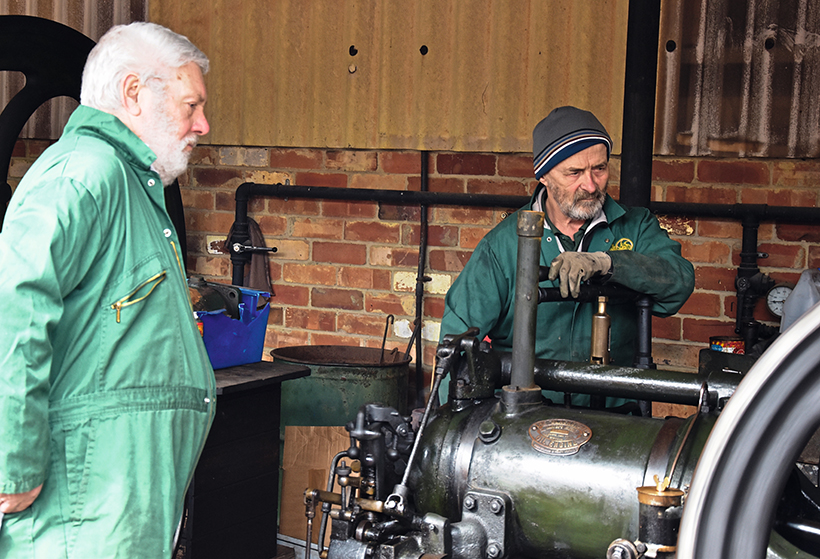
Val Moore (Left) and Tony Green start the 1921 15 horsepower ‘Buntingsdale’ Blackstone, s/n 147145.
Air pressure from its own compressor is maintained above the fuel spray box to spray fuel into a hot-bulb as well as the cylinder. Ignition in the hot bulb is then transferred via a tube into the cylinder. The recovery and restoration of this engine was described in Stationary Engine Magazines No. 89, July 1981 and No. 93, November 1981. A rare guest engine was brought along by Andrew Wild, Chairman of the Macclesfield Vintage Machinery Group. This was essentially a Fairbanks Morse & Co although the company that assembled the engine in Horsham, Sussex added a few components of their own including their own name; “The Arun”.
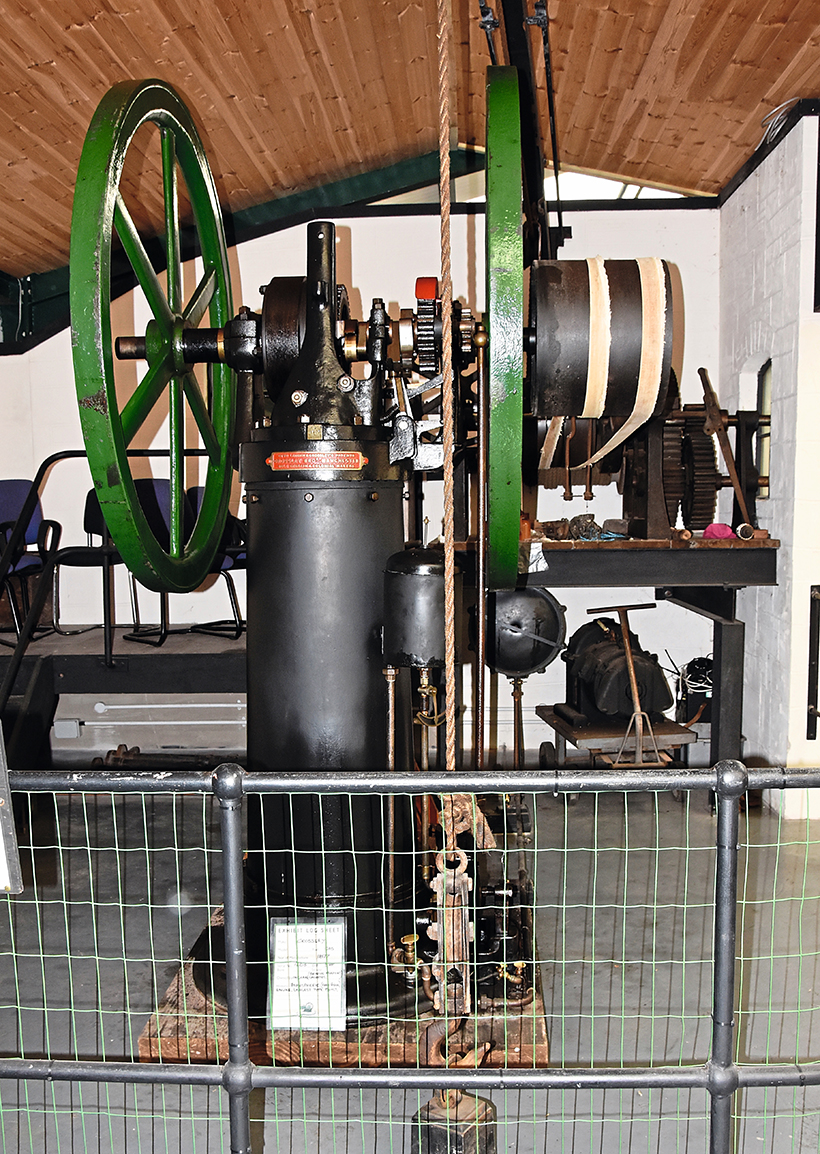
Crossley, s/n 1403, of 1877 at 3 horsepower requires a lot of head room and is the largest size they produced, it still belt drives its original hoist from Bristol Docks.
A large number of the engines on display were running and if any visitor showed an interest in an engine it would be started if possible. Any visitor interested in external combustion couldn’t fail to be impressed by the unique engines running in the Steam Section. This has been extended to include static examples of small and model steam engines. During the closed season, the efforts of the volunteers have been focussed on the Bowden Memorial Building, the structure of which has now been completed and concrete bases are currently being constructed for the many large engines the Museum possesses. However, it was pleasing to see on display here the 22 horsepower 1929 Crossley engine recovered from Lion’s Paw Farm last year (see Stationary Engine magazine No.595, October, 2023).
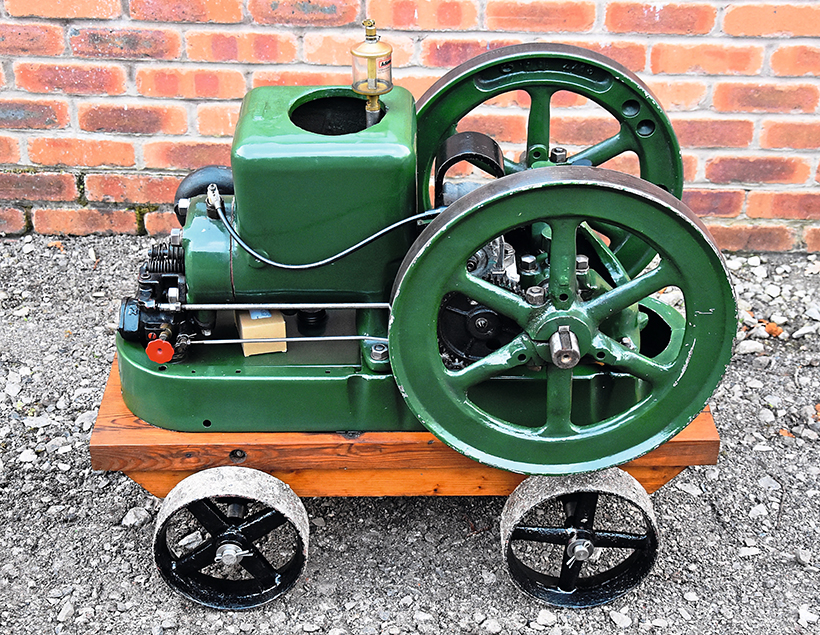
‘The Arun’, s/n 636983, dates from 1925; enthusiasts will recognise this engine as being essentially a Fairbanks, Morse & Co with a few added components.
The Museum is sited in an attractive setting on the site of the old Anson Colliery. It has excellent facilities and any visitor not familiar with it will be amazed at the number and range of exhibits. Fortunately the first Open Day on Sunday 31st March was dry. A cold wind failed to deter a good number of visitors, some of whom had travelled long distances to attend. The Museum can look forward to a successful 2024 season. For further information see www.enginemuseum.org.
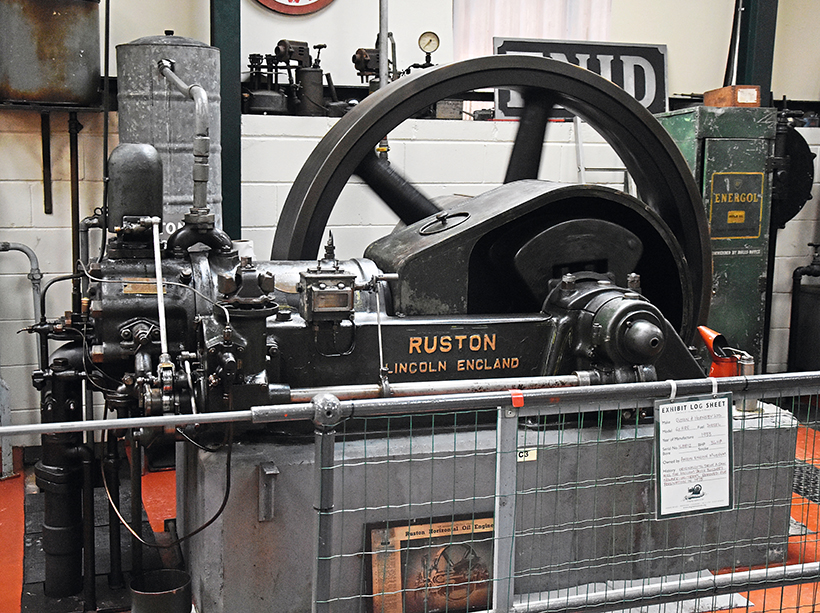
Typical of the medium size engines running was this 1933 36 horsepower
Ruston 6XRE, s/n 168812.
This feature comes from the latest issue of Stationary Engine, and you can get a money-saving subscription to this magazine simply by clicking HERE
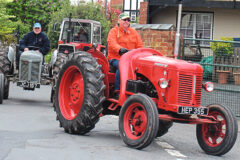
Previous Post
Successful James Corfield Memorial Tractor Run fund-raiser
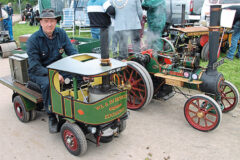
Next Post
Superb steam miniatures at the Abbey Hill Rally



